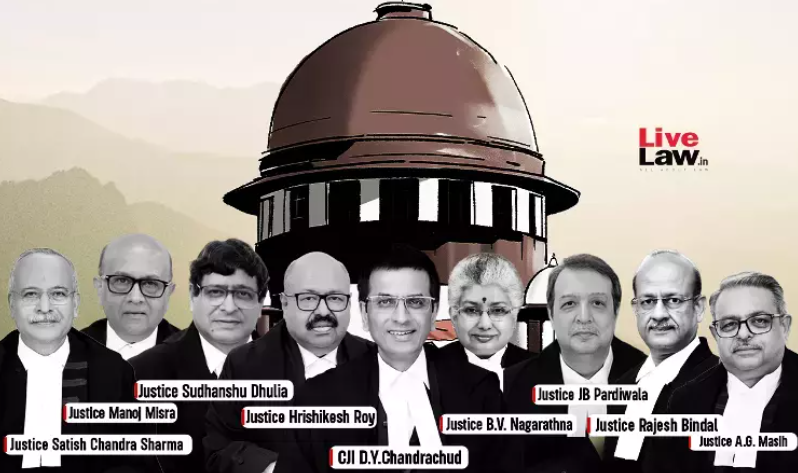Unpacking the Debate Over Article 39(b) of the Constitution: Balancing Private Property and Public Welfare (GS Paper 2, Polity)

Introduction:
- A contentious legal debate has emerged surrounding the interpretation of Article 39(b) of the Indian Constitution, prompting a nine-judge bench of the Supreme Court, led by Chief Justice D.Y. Chandrachud, to delve into the matter.
- This article dissects the key issues, arguments, and implications associated with Article 39(b) and its relevance in contemporary Indian jurisprudence.
Background and Context:
- Article 39(b) falls under the Directive Principles of State Policy, which serve as guidelines for governance and are fundamental to the ideals of a welfare state.
- The central question under scrutiny is whether the phrase "material resources of the community" encompasses privately-owned resources, thereby empowering the government to redistribute them for the collective good.
- The genesis of this debate can be traced back to the 1978 Ranganatha Reddy case, which revealed conflicting interpretations among jurists.
Historical Precedents and Conflicting Views:
- In the Ranganatha Reddy case, the majority opinion held that private property does not constitute community resources, while Justice Krishna Iyer dissented, arguing that it should include private property.
- This disparity in interpretation necessitated further judicial scrutiny, leading to the establishment of a nine-judge bench in 2002 to resolve the lingering ambiguity surrounding Article 39(b).
Arguments Presented Before the Bench:
- Solicitor General Tushar Mehta contends that if privately-owned assets possess resources beneficial to the public, they may fall within the ambit of Article 39(b).
- However, he rejects the notion that all private property automatically qualifies as community resources. Chief Justice Chandrachud acknowledges that certain privately-held assets may impact public interest, warranting government regulation.
- Nonetheless, he cautions against conflating Article 39(b) with an agenda of communism or socialism, emphasizing the Constitution's commitment to safeguarding private property and the freedom to conduct business.
Interpreting the Constitution in Contemporary Context:
- The Supreme Court underscores the imperative of contextual interpretation, stressing the need to align constitutional principles with India's evolving economic landscape and developmental aspirations.
- Recognizing the country's embrace of policies fostering private sector growth, the Court emphasizes that interpreting Article 39(b) should not undermine the protection of individual property rights.
- Chief Justice Chandrachud emphasizes the importance of a nuanced approach that reconciles the objectives of Article 39(b) and (c) with the imperative of attracting private investment.
Significance and Implications of Article 39(b):
- Article 39(b) occupies a pivotal position within India's constitutional framework, encapsulating the state's commitment to socio-economic justice and welfare.
- Its interpretation carries profound implications for property rights, economic policies, and the delicate balance between individual liberties and societal welfare.
- The forthcoming decision of the Supreme Court will provide much-needed clarity on the scope and applicability of Article 39(b) in contemporary India.
Conclusion:
- As the legal saga surrounding Article 39(b) unfolds, it underscores the complexity of reconciling competing interests in a diverse and dynamic democracy like India.
- The Supreme Court's deliberations hold the promise of shaping the trajectory of socio-economic policy and governance, heralding a new chapter in the ongoing quest for justice, equity, and prosperity for all citizens.


